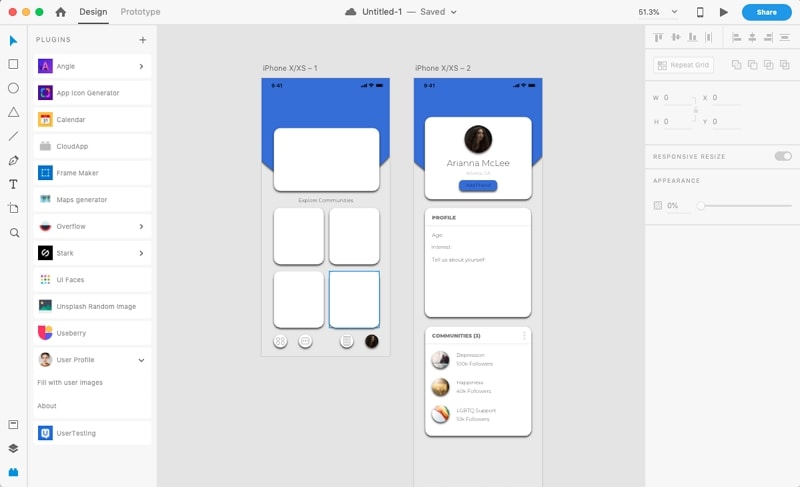
Let’s create a restaurant app in which people can select what to order from a list of food. Then, go to File → Save As and choose a name to save your file (mine is mobile.xd). Open Adobe Xd, and choose the “iPhone 6/7/8 Plus” template. I’ve also included an Illustrator file with icons, which you can use to set up your examples quickly. Both examples will be done in a mobile template, so that we can see our simulation in action directly on our mobile device. In this tutorial, we will learn how to set a menu bar as a fixed element and how to apply an overlay transition in a prototype, to simulate a menu opening from the click of a button. 5) Adobe mobile home 6) By clicking on the menu symbol, a submenu comes out as an overlay. When you scroll down, the button stays fixed to the bottom of the screen. 4) Netflix sets its call to action as a fixed element. 3) Netflix’s Italian mobile website home screen. How do famous brands use fixed elements and overlays? Well, let’s take a look at some examples to get some inspiration first.įrom left to right: 1) McDonald’s mobile home 2) A submenu slides up when you click on the hamburger menu. With the new overlay feature, you can simulate interactions such as lightbox effects and submenus. This way, you get a realistic simulation of scrolling on desktop and mobile. (This article is kindly sponsored by Adobe.) A fixed element is an object you set to a fixed position on the artboard, allowing other items to scroll underneath. When you work with prototypes and want them to be more interactive, functions like these will be very helpful.

Over the summer, Adobe XD released two great prototyping features: fixed elements and overlays.


 0 kommentar(er)
0 kommentar(er)
